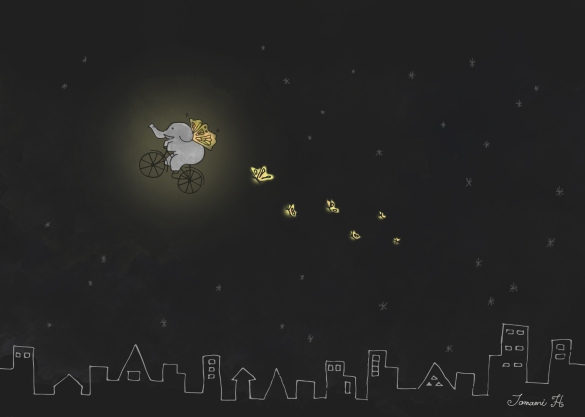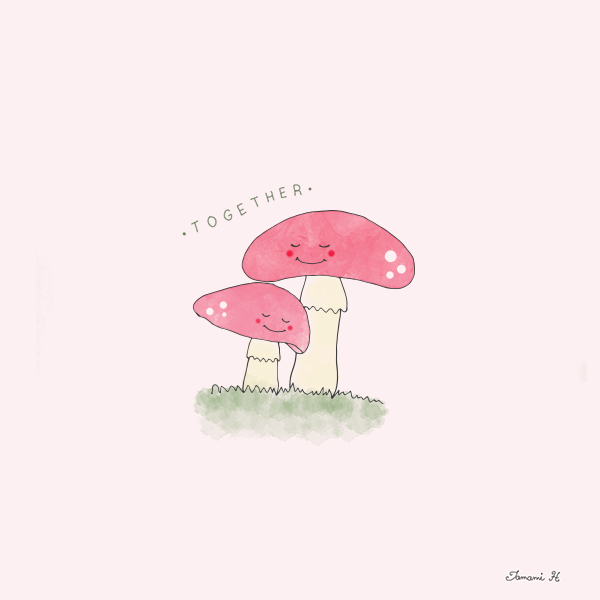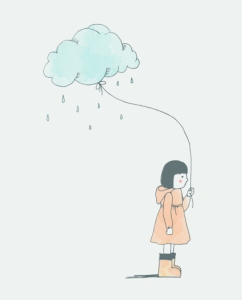Together
Now I know I’ve got a heart.
Always Raining
12. What role does beauty play in contemporary art?
To some, it plays very important role. People are naturally attracted to beautiful things, and if the art work is widely considered beautiful, the beauty plays a role of first “catch” to many viewers. Beauty is subjective to each person, and artists can only create what they consider beautiful. To Robert Adams, beauty is very important as he says “Beauty, which I admit to being in pursuit of, is an extremely suspect word among many in the art world. But I don’t think you can get along without it. Beauty is the confirmation of meaning in life. It is the thing that seems invulnerable, in some cases, to our touch. And who would want to do without beauty?”
To others, however, creating beautiful things does not seem to be important in contemporary art. Some artists choose to create something unpleasant to look at. Bruce Nauman filmed running mice in his studio as he states “if I was an artist, and I was in the studio, then whatever I was doing in the studio must be art.” I am not sure if everything he does can be beautiful, and I do not think beauty is his focus in art.
11. What are the subjects, issues, and themes important to artists working today?
I feel many people are conscious of gender, race, war, religion, and personal issues in today’s society, and as an artist, it is important to be aware of what is happening in our society, and the current events might inspire some work of art. At the same time, I do not think that contemporary artists always have to follow social issues or any types of norm of subjects. Richard Serra was inspired from his childhood memory of a ship, and Sally Mann was inspired by the nature that surrounds her. These subjects are original to each artist, and I feel they are equally interesting to someone who follows general issues or themes. Ultimately, artists seem to make art according to what is important to themselves.
As a contemporary artist, I like to work with something personal rather than social issues. Appreciation to nature and experiences in life often show up in my work as main subjects.
10. What are other venues for exhibiting art?
In addition to galleries and museums, there are no limitation to locations for art. I feel artists now have the freedom to choose the venue accordingly to each art work whether the venue was chosen due to maximizing visual aesthetic of work or having conceptual connections. Art work has its own presence in the environment, and controlling the surrounding seems to be a part of artists’ job.
When I create company logos and packaging designs, my venue is somewhere very close to everyday life, such as supermarket, office, home, on the street, etc. Barry McGee once said “things on the street are close to the truth,” and he may not have meant it as advertisement. But to me, the same logic applies to advertisement and commercial designs because it is deeply embedded into people’s lives, and it affects people constantly without them visiting any particular locations. There is no rope or security guards to stop viewers from interacting with each art work. I like the fact it is everywhere without any boundaries.
9. What is the difference between working alone and collaborating with others?
By working alone, all decision makings are on one person. From building concepts to where the final piece goes, the one artist has all the freedom and responsibility to the art work.On the other hand, when collaborating with others, decisions are made by multiple people.
Both working alone and collaborating have pros and cons. When working alone, it is all about one artist’s opinion, and what he/she says goes. On the other hand, when collaborating with others, some compromise are expected from each other. As Hubbard and Birchler mentioned that it is very difficult to find a place where they both fit in. They always try to find the third place where they both have the same investment in terms of relation or attachment or dis-attachment so that they can avoid an imbalance of integrations.
However, good thing about collaborating is there is a combination of different abilities. Maybe one person is not good at one thing, but another is. The art work is not limited to one person’s ability and has multiple possibilities.
8. Where do artists find inspiration?
Anywhere depending on artists. Artists such as Maya Lin, Pepon Osorio, and Richard Serra seem to find inspiration from memories. Other artists such as Sally Mann and Bruce Nauman seems to get inspired by their surroundings. In some cases, artists could be inspired by other artists, spirituality, sexuality, identity, etc. A place for Inspiration is unlimited.
I personally find inspiration close to my life. My surroundings, mental state, memory, identity can be used as source of inspiration.
7. What distinguishes visual art from other forms of visual communication?
Personally, visual art and visual communication are the same because I believe any successful visual art is communicating to the viewers in some ways, and work of art cannot mean nothing. Even the simplest forms such as lines and shapes can hold meanings as Robert Mangold has shown. Just some artists favor making the meanings obvious, and others do not.
As an artist, I am always paying attention to the method of delivering my message. I like to communicate with the viewers by guiding them with some clues, at the same time, I do not show the meanings too obvious, either.
Louise Bourgeois once mentioned a work of art does not have to be explained, but if her work does not cause any feelings to the viewer, she considered it as a failure. This shows the artist’s intension to communicate with the viewers, and when the communication part is failed, the work is failed as an art as well.



